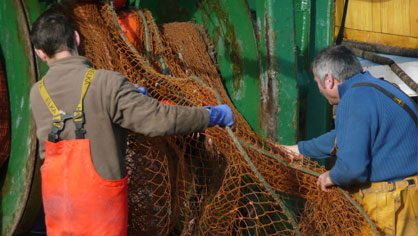10 August 2011
The EU rules which cover technical conservation measures, such as mesh size, minimum landing sizes, and the selectivity of fishing gear generally, have to date been dealt with through the Technical Conservation Regulation.
Within months of the current “Tech Con” Regulation (EC 750/98) coming into force in 1998, it was recognised that it was not fit for purpose. Amendments to patch the holes in the new legislative package were quickly adopted shortly afterwards and the list of these has grown longer in subsequent years. Additional technical rules associated with specific recovery programmes have also been introduced in parallel without proper coordination with the existing core Technical Regulation. As time has passed, the inconsistencies within the Regulation and contradictions with other EU fisheries regulations have mounted.
A New Regulation?
Extensive consultations were held around 2009 on a replacement Tech Con Regulation that would consolidate the original Regulation, its amendments, and all the new rules affecting gear selectivity and net geometry, such as those contained in the various pieces of cod recovery legislation.
Simplification of this, one of the most complex parts of the CFP, was also an important part of this new initiative. However after floundering for a while, the draft proposals were quietly shelved, leaving the fishing industry and fisheries enforcement authorities to struggle though. Only by applying a pragmatic approach to a hotchpotch of inconsistencies, has it been possible to apply any sort of technical conservation regime. The overall effect on this lack of coherence is evident in ICES assessment that over the period the average mesh size in use in the North Sea has decreased despite the increase for whitefish mesh size from 90mm to 120mm. This is because many vessels have been forced from the main whitefish fisheries into the smaller mesh nephrops fishery in response to stringent cod recovery measures. A senior enforcement figure in the UK recently voiced the view that the regulations at sea “were an absolute minefield”, for fishing vessel operators. At the same time, he expressed the opinion that the fishing industry, with few exceptions “was compliant” with the regulations. It is only fair to pay tribute to both fishermen and enforcement authorities for finding a reasonable way through the minefield of failed legislation.
The Commission, enforcement authorities, and certainly the fishing industry, all therefore recognise that the current rules are dysfunctional. One of the most glaring aspects of the 1998 rules is how far they are out of touch with the current preoccupation for reducing discards. The current rules requirevessels to discard if their catch does not accord with the preordained percentage species mix for the mesh size in use. These are the notorious catch composition rules that lie at the heart of 750/98 and it is difficult to see how they can be made to be consistent with minimising discards.
A New ‘Tech Con’ Regulation?
So, here is the challenge: how to apply a set of general technical conservation rules that deliver minimum requirements for selectivity to all vessels fishing in EU waters, irrespective of size or the characteristics of fishing area, without legislating to create discards or other perverse incentives, in a less complex way than is achieved currently, and that can be enforced in a proportionate and transparent way? And good luck on that one.
It is no surprise then that the new EU Technical Conservation Regulation has stalled, stuttered, been delayed, revised, delayed again and is currently intertwined with the CFP reform process.
The North West Waters RAC, at its recent meeting in Dublin, was updated by the Commission on its current thinking on a new technical conservation that would be adopted immediately after CFP reform and would be consistent and compatible with that reform. The presently favoured approach appears to be a hybrid between the current approach which lays down one size-fits -all blanket European technical rules, and the approach advocated by the RACs, which would include technical conservation as one of the features of fisheries management best dealt with delegated responsibilities and regional management .
The North Sea RAC and North West Waters RACs have both submitted advice that explains how improved selectivity could be achieved through sustainable fishing plans developed and applied by industry organisations within an overarching system of safeguards and guarantees; and through some form of regional management, in which technical measures could be tailored to the specifics of the fleets and fisheries in each area.
Much has to be done in this area of policy. The development of more selective gears that allow vessels to move towards catching and landing their target species and sizes, whilst leaving behind everything else, hhas come a fair way and undoubtedly will develop further. Often however, it is not the technical issues involved but blunt, top-down, regulatory constraints that generate perverse outcomes that pose the most intractable problem. It is the precise balance between prescription and delegated self-regulation that will determine whether the new regulation will mark a fundamental shift towards an effective technical conservation regime in EU waters. The danger is that the Commission, Council and European Parliament will, in the final analysis, be unable or unwilling to take their hands off the micromanagement levers. It is in the sphere of technical measures that the need for a transfer of responsibilities to the regions, and to approved industry organisations, is at its most acute but only time will tell whether the European institutions are ready to move in this direction.

